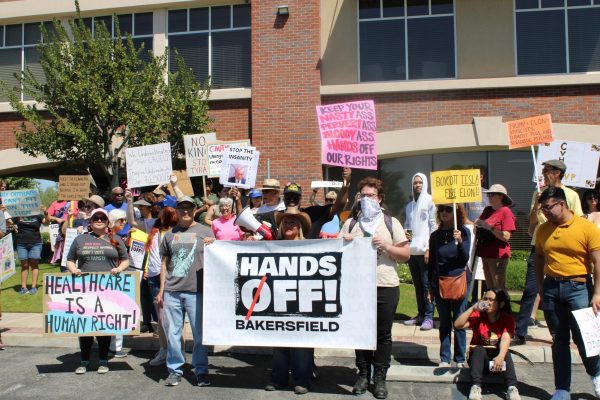Put our method of execution to death
California Department of Corrections and Rehabilitation
May 2, 2019
Alfred Flores from San Bernardino County killed three teenagers because they wouldn’t become a part of his gang. Veronica U. Gonzales from San Diego County tortured and killed her 3 year-old niece in a scalding bathtub. William A. Jones from Riverside County murdered his elderly neighbor “during a robbery and rape, strangling her and then setting fire to her mobile home,” according to the Los Angeles Times. The Times listed every one of the 747 people on California’s death row.
In March, Gov. Gavin Newsom made the decision to put a moratorium on the death penalty in California with an executive order. I actually agree with him. Somewhat.
California has no business having a death penalty if we don’t have the will or the means to carry out the executions promptly. There are 128 people on California’s death row who have been there for more than 30 years. This is not the death penalty. This is psychological torture by the knowledge that death could come at any point, for more than 30 years.
Van Poyck was executed in Florida in 2013. According to CNN, he wrote three books and wrote letters to his sister, which gave us insight into the experience of being on death row. Poyck writes about being in the state of “death watch,” where prisoners know that they will be executed in seven days. There is even a “mock execution,” where the guards and the prisoner go through the motions of the execution. The prisoner gets fitted for his burial suit. This isn’t right.
In addition to that, when the death row inmate gets to his final moments, he can only hope his execution will go as planned. All states that still have the death penalty use lethal injection, which has the highest botched execution rate among the execution options, according to the Death Penalty Information Center.
Lethal injection works because we’re in favor of the death penalty, but we want to pretend we’re not really killing people. We want it to be clean and bloodless. This shows that as a country, we’ve grown beyond barbaric methods of killing, such as hanging or the electric chair. We need to decide if we’re comfortable with the death penalty or not. If so, it’s time to pick an effective method and get on with it.
There is only one method of execution that has a zero percent rate of botched executions. That is the firing squad. Granted, the fact that it has not been used many times can contribute to this, but the firing squad has the advantage of being immediate, and administered by professionals.
According to FiveThirtyEight, prison staff often must carry out lethal injection, because most physicians will not violate the Hippocratic Oath requiring that a doctor does not do harm. Firing squads have been assembled in the past from a group of volunteers who are experienced in shooting. It is theoretically possible to miss, of course, but shooting someone twice is still better than the excruciating, long-lasting death that inmates have reportedly felt during botched lethal injections, according to at least one case, Arthur v. Dunn (2017), that reached the Supreme Court.
The moratorium on the death penalty is a good idea, at least as long as it takes us to do better. The ideal death penalty scenario is this: a person is convicted and gets two appeals. After the second appeal, the courtroom is cleared out and the person is led into another room where the firing squad is waiting. They get the execution over with.
Otherwise, we give up on the death penalty and admit we just don’t have what it takes.








Lori Rose • May 4, 2019 at 5:53 am
It makes me upset that I voted for him. I want the death penalty reinstated. We should start putting down these rabid humans after DNA proof of there crimes. They shouldn’t be allowed to live longer then their victims.